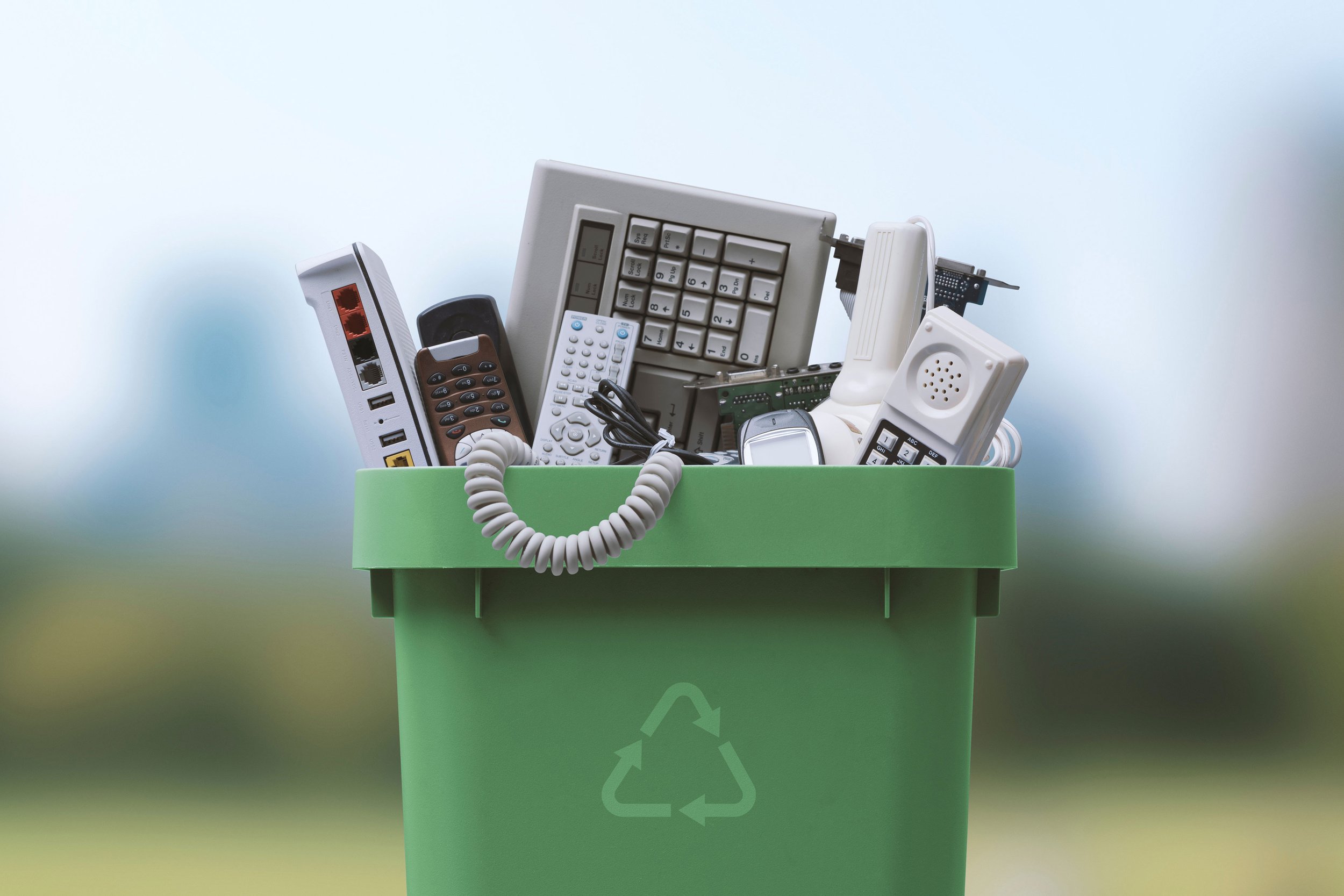E-Waste Recycling: A Lucrative Opportunity for MRFs and Scrap Yards
E-Waste Recycling: A Growing Opportunity for Scrap Yards and MRFs
The global surge in electronic waste (e-waste)—including old computers, smartphones, appliances, and industrial electronics—presents both a challenge and a major opportunity for Material Recovery Facilities (MRFs) and scrap yards. While e-waste streams are growing rapidly, many facilities lack the expertise or equipment needed to process them profitably. With the right approach, MRFs and scrap yards can unlock new revenue streams by recovering valuable metals and components from electronic waste. This article will explore the high-value materials found in e-waste, safe and efficient sorting practices, and how to build connections with buyers in the electronics recycling market.
Why E-Waste Is a Growing Problem—and Opportunity
The world generated over 53.6 million metric tons of e-waste in 2019, according to the Global E-Waste Monitor, and this number is expected to grow by 30% by 2030. This rapid increase is fueled by shorter technology lifecycles, rising consumer demand for electronics, and industrial upgrades. Yet, only 17.4% of e-waste is properly recycled, with the rest ending up in landfills or being informally processed in ways that waste valuable resources and pose environmental risks. For MRFs and scrap yards, this presents an untapped opportunity to process discarded electronics and recover high-value materials that are in high demand, including precious metals and rare earth elements used in batteries, circuit boards, and processors.
High-Value Materials Found in E-Waste
1. Copper
• Found in: Wires, cables, and printed circuit boards (PCBs).
• Market Relevance: Copper prices have surged due to demand for renewable energy and electric vehicles, making it one of the most valuable materials in e-waste.
• Average Value: Approximately $3.50–$4.00 per pound (varies by grade).
2. Aluminum
• Found in: Laptop casings, power supply components, and heat sinks.
• Market Relevance: Recycled aluminum is used in everything from automotive parts to consumer electronics, making it a lucrative material.
3. Gold and Silver
• Found in: Processor pins, connectors, and memory chips.
• Market Relevance: Though present in small amounts, gold and silver are among the most valuable metals in electronics. One metric ton of circuit boards can yield more gold than 17 tons of mined ore.
4. Rare Earth Elements (REEs)
• Found in: Batteries, magnets, and LED displays.
• Market Relevance: REEs like lithium, cobalt, and neodymium are essential for producing electric vehicle batteries, wind turbines, and electronics. With supply chains often dependent on imports, the market for recycled REEs continues to grow.
5. Steel and Ferrous Metals
• Found in: Larger appliances like washing machines and refrigerators.
• Market Relevance: Ferrous metals may be low in value per pound but can be recovered in high volumes, making them worth processing when combined with other materials.
Best Practices for Sorting and Monetizing E-Waste
1. Pre-Sorting and Dismantling
To maximize revenue, it’s essential to pre-sort and dismantle e-waste to separate high-value components.
• Pro Tip: Focus on separating circuit boards, power supply units, and lithium-ion batteries early in the process. These items are often worth more individually than when shredded or processed in bulk.
• Safety Measure: Batteries must be handled carefully to avoid combustion or leakage during processing.
2. Invest in E-Waste-Specific Sorting Technology
Standard sorting lines are not designed for complex electronics. Consider upgrading your facility with:
• Shredders and Granulators: Designed to break down casings and recover metals.
• Eddy Current Separators: Useful for sorting non-ferrous metals like aluminum and copper.
• X-Ray Fluorescence (XRF) Systems: These machines can identify the metal composition of components, helping to sort valuable elements more accurately.
3. Partner with Certified E-Waste Buyers
Not all buyers can process e-waste components safely or at scale. Establish partnerships with reputable, certified e-waste buyers who can ensure downstream compliance and offer competitive prices for:
• Printed circuit boards (PCBs) with precious metals.
• High-grade copper and aluminum scrap.
• Batteries and rare earth materials for reprocessing.
4. Follow Regulatory and Environmental Guidelines
E-waste recycling is highly regulated due to the presence of hazardous materials like lead, mercury, and cadmium.
• Pro Tip: Work with R2 (Responsible Recycling) or e-Stewards-certified partners to ensure compliance with federal and state regulations.
• Avoid exporting e-waste without proper documentation to prevent legal violations and reputational damage.
5. Track and Optimize Your E-Waste Streams
Data collection and reporting tools can help track which e-waste streams generate the highest returns and which are underperforming. By monitoring buyer demand and pricing trends, MRFs can focus on collecting high-value items while streamlining lower-value streams.
Case Study: How a Midwest MRF Turned E-Waste into a Revenue Stream
A Midwest MRF added an e-waste sorting line to its facility in 2022 to capitalize on a growing influx of electronics from municipal waste streams. After investing in dismantling equipment and building partnerships with certified buyers, the MRF saw a 15% increase in annual revenue within the first year. Key success factors included pre-sorting batteries to avoid safety hazards and sending PCBs to specialized refineries that offered higher payouts for precious metals.
Challenges to Consider
• Initial Investment: Specialized equipment for e-waste recycling can be costly, but ROI can be significant with consistent e-waste volume.
• Training Needs: Sorting and dismantling require skilled workers who understand the components of various electronics and safety protocols.
• Logistics: E-waste is often bulky and requires specific storage solutions, particularly for hazardous components like batteries and cathode ray tubes (CRTs).
Conclusion
E-waste recycling presents a growing opportunity for MRFs and scrap yards to diversify their revenue streams and contribute to sustainable resource recovery. By investing in pre-sorting, partnering with certified buyers, and ensuring regulatory compliance, facilities can profitably handle the influx of discarded electronics. Midas Peak helps MRFs and scrap yards build connections with reputable buyers, optimize their e-waste processes, and implement technology solutions that maximize profitability. Contact us today to learn more about how we can support your e-waste recycling efforts.

